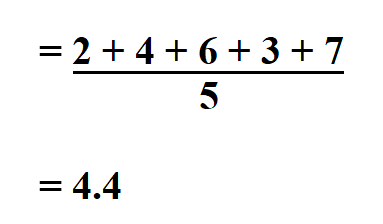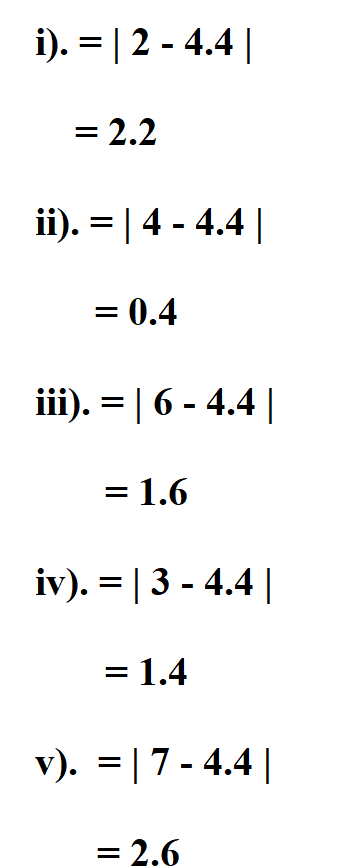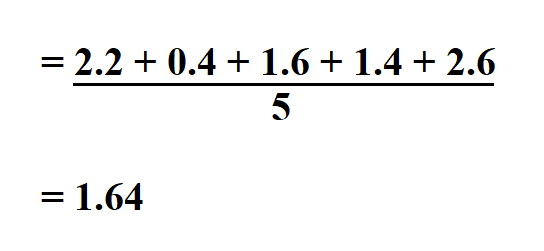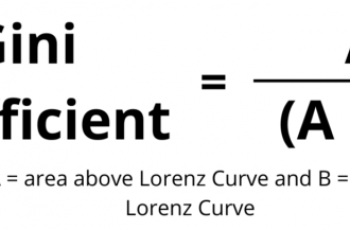Mean absolute deviation (MAD) of a data set is the average distance between each data value and the mean.
Mean absolute deviation helps us get a sense of how “spread out” the values in a data set are.
Formula to calculate mean absolute deviation.
- Start by finding the mean of the data set.
- Find the absolute value of the difference between each data value and the mean.
- Find the sum of the absolute values and divide the sum by the number of data values.
Example:
Find the mean absolute deviation of the data set below.
2, 4, 6, 3, 7,
We’ll begin by finding the mean of the data set.

Then find the absolute value of the difference between each data value and the mean.

Lastly, find the sum of the absolute values and divide by the number of the values.

Therefore, the MAD of the data set is 1.64.

